Jump to:
You’re probably here because you’re wondering, “what is fine hair?“. And do you have it?
Does your mane lack natural volume and bounce? If so, you may have fine hair (this can be straight or wavy). For more info on what fine hair actually is and how to handle it, continue reading.
What Is Fine Hair?
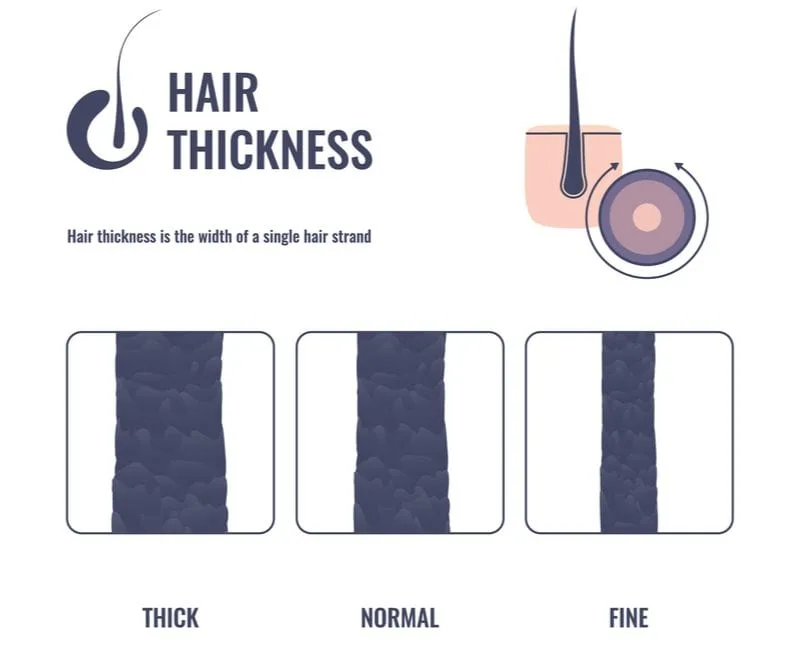
Art4stock/Shutterstock
When referring to fine hair, we’re talking about the actual size of your hair strands. As you may have just guessed, finer hair is smaller than other hair types.
It doesn’t equate to the density of your hair, which is something entirely different altogether – i.e., the quantity of hair you have.
If you want to get technical, finer hair usually doesn’t have the inner structure of the hair strand called the medulla. Consequently, the diameter of each hair strand is smaller.
Here are some other characteristics common in fine hair:
- It’s soft and silky
- It’s usually easy to straighten and hard to curl
- It’s lightweight
- It’s often fragile and prone to breakage
- Due to its lack of volume, it’s harder to hold a style
- It’s prone to greasiness
Fine hair is comprised of less protein than other hair textures, and, as such, it’s usually smooth and lacking in volume. It’s more prevalent in people with lighter natural hair colors, particularly blondes. What’s more, many children have fine hair before their hair texture changes during puberty.
Shampooing and Conditioning Fine Hair
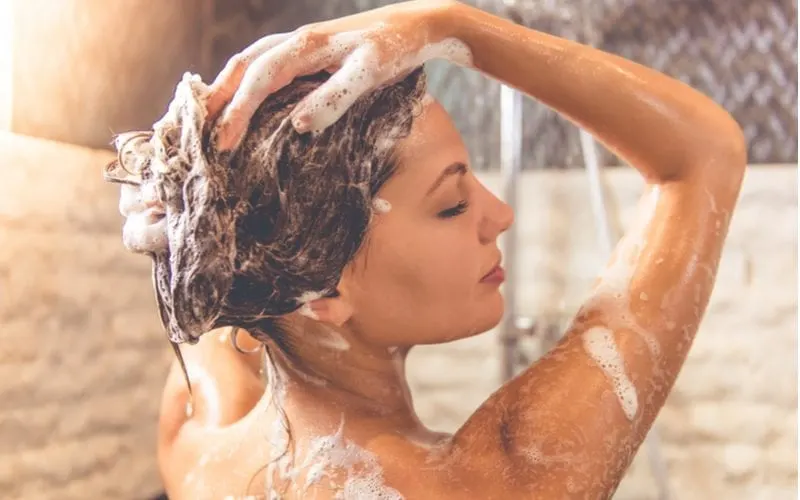
VGstockstudio/Shutterstock
If you’re looking to boost bounce and shine, it’s wise to shampoo fine hair every day with products designed to volumize hair. Fine hair is prone to greasiness because the hair shaft is smoother and less porous than coarser hair types. Consequently, oil and grime settle more visibly on the hair, which is what gives it its greasy look.
The truth is, the greasiness of your hair hinges on your hair’s texture. For instance, fine, straight hair can look greasy just hours after washing. In contrast, coarse hair can go days looking clean!
Throughout the day, your hair gathers dirt and oil that can really weigh your hair down – especially if it’s fine. This is where using a high-quality shampoo comes to the rescue.
Ideally, when applying and massaging shampoo into your hair, focus on the roots, where the dirt is. This helps eliminate grease in its tracks for healthier, shinier-looking locks.
You may think conditioning fine hair would only add to its limpness. If that’s something you’re experiencing, there’s a good chance you’re not using the right conditioner for your hair type.
The right conditioner will leave your locks sleek and shiny without quashing that much-needed bounce. Try using products explicitly designed to bulk out your hair and focus on conditioning the bottom half of your hair, where it’s dryer.
How to Style Fine Hair
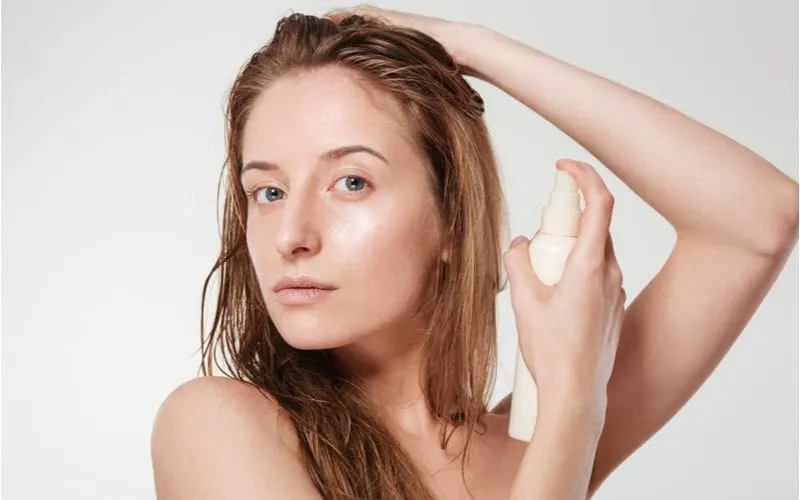
Dean Drobot/Shutterstock
There’s a good chance you’re looking to add volume to your locks. To do that, opt for matte and water-based styling products rather than oil-based ones. These are more lightweight, which goes a long way to give the appearance of fuller hair.
It’s also worth looking at other products that pump up your hair – for instance, root sprays and hair mousse. You can add these products to damp hair and dry it using a blow dryer on a cool temperature setting.
This helps separate each hair follicle so that it stands up, hence creating more volume. Dry shampoo is also fantastic for injecting some volume and texture into finer hair.
Just spray a small amount into the roots (on dry hair) and use your fingers to plump up the roots. With the right dry shampoo, you’ll achieve instant volume!
Also consider setting your hair in velcro rollers. This is an easy way of adding some extra lift to your mane. After blow-drying, section off your hair at the crown, set them in rollers, switch your hairdryer to its coolest setting and give them a quick blast to set the volume in place.
Must-Have Products
On top of everything above, below we’ve listed a few other products that may come in handy for styling fine hair:
- Use products explicitly formulated to swell hair cuticles. This boosts the diameter of the hair strand, creating the illusion of rougher hair.
- As fine hair is prone to breakage, try to limit your hair’s exposure to heated appliances like curling tongs and hair dryers. When you do use heated products, switch them to the lowest heat possible.
- Only use a small amount of product when styling your hair.
Tip: If you’re still rocking with a cheap dryer, it’s time to glow up. Check out our list of the best blow dryers to really up your styling game.
Ditch The Brush; Use a Comb
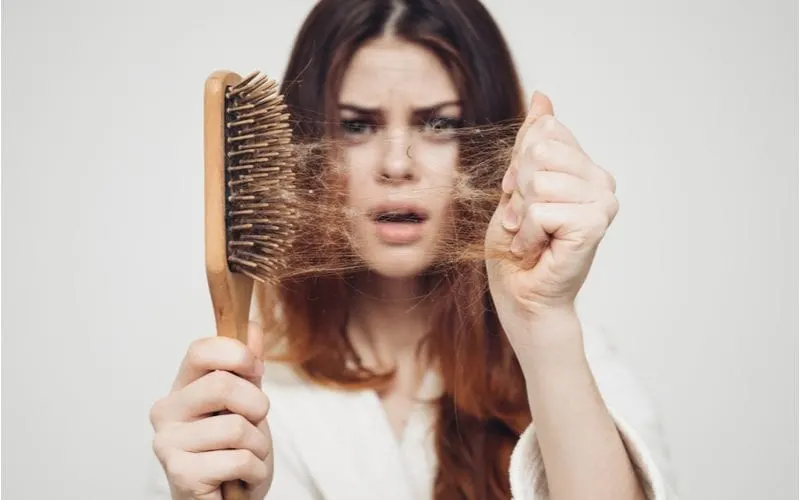
ShotPrime Studio/Shutterstock
When it comes to brushing your hair, it’s far more likely to break when it’s wet. This is all the truer for those with fine hair. Its delicate nature is less likely to withstand the tugging of a regular hairbrush.
Instead, opt for a wide-tooth comb and gently detangle your hair, starting at the bottom. Comb downwards and carefully tease any knots out. Gradually work your way up towards the roots until fully combed.
When your hair’s dry and needs brushing, stick to a soft bristle brush and use it sparingly to reduce the likelihood of damage.
Get Regular Trims
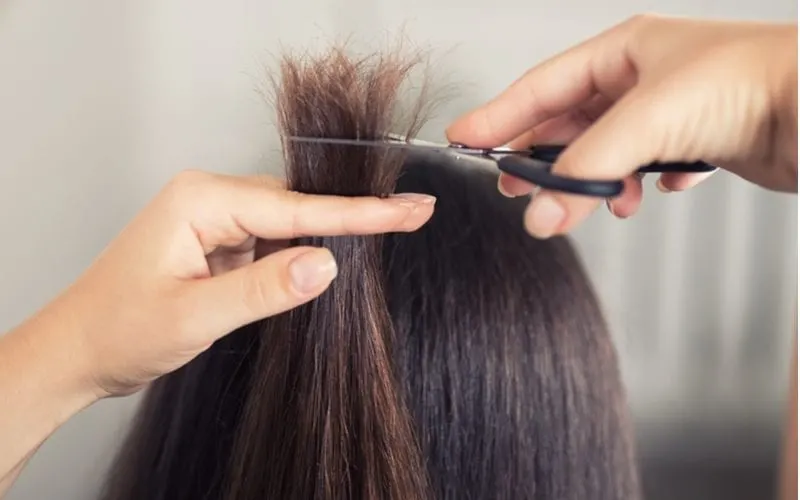
Alter-Ego/Shutterstock
Unfortunately, split ends are more noticeable for those with fine hair. To stay on top of the damage, it’s worth booking yourself for a trim once every six to eight weeks.
Not only that, but as fine hair is more prone to breakage, it’s predisposed to develop split ends quickly – especially if you frequently use heat products on your hair.
While we’re on the subject of cutting hair, it may also be worth considering a shorter style. Long hair is more likely to weigh your mane down, making it much harder to create and sustain volume.
Consider Highlights
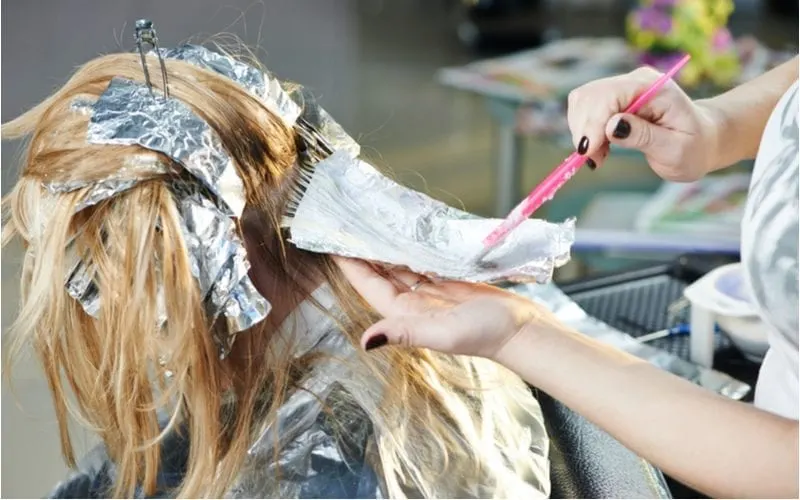
Dmitry Kalinovsky/Shutterstock
Highlights are excellent for adding texture to fine hair. If you’re struggling with limpness, highlights rough up the hair cuticle, making it easier for hair to hold its volume.
However, this is somewhat of a double-edged sword because, as we’ve said, finer hair is more prone to damage, and of course, highlights can weaken your hair.
If you’re worried about ammonia-based highlights, consider henna or semi- and demi-permanent color instead. You’ll enjoy all the perks of highlighted hair without the damage!
Things to Avoid
When you have fine hair, heavy products like oil-based pomades and thick waxes can make your hair look greasy and weigh your locks down. To keep this from happening, use lightweight conditioners regularly and opt for water-based style products.
So, What Is Fine Hair?
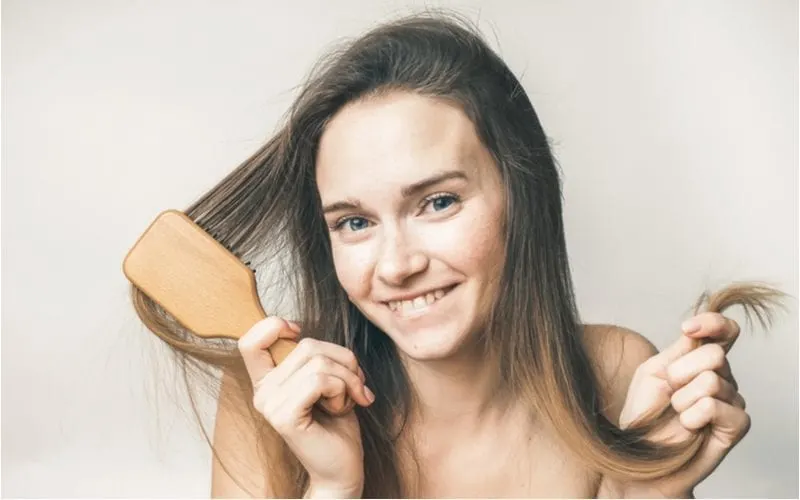
Nelen/Shutterstock
So, there you have it, our medium-length answer to “what is fine hair?” We hope you now have a better idea of what it is and how to look after it.
The key to making the most out of this hair type is to research and use products explicitly designed to boost volume and minimize grease. If you follow that advice, you can’t go wrong!
